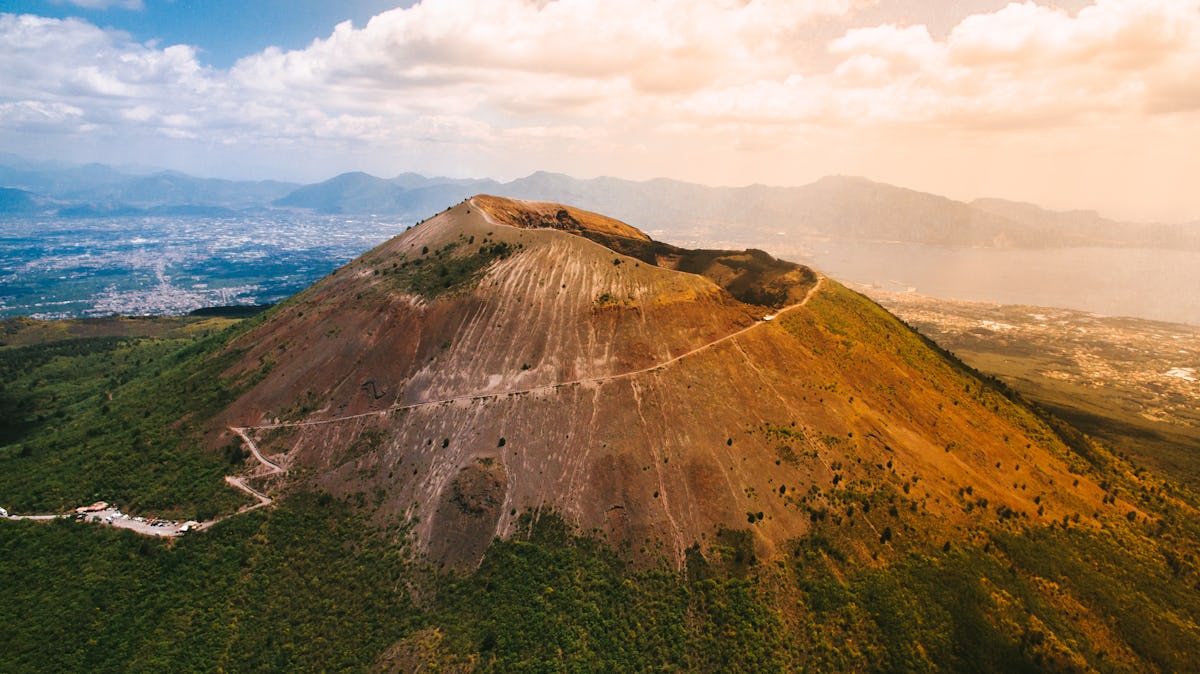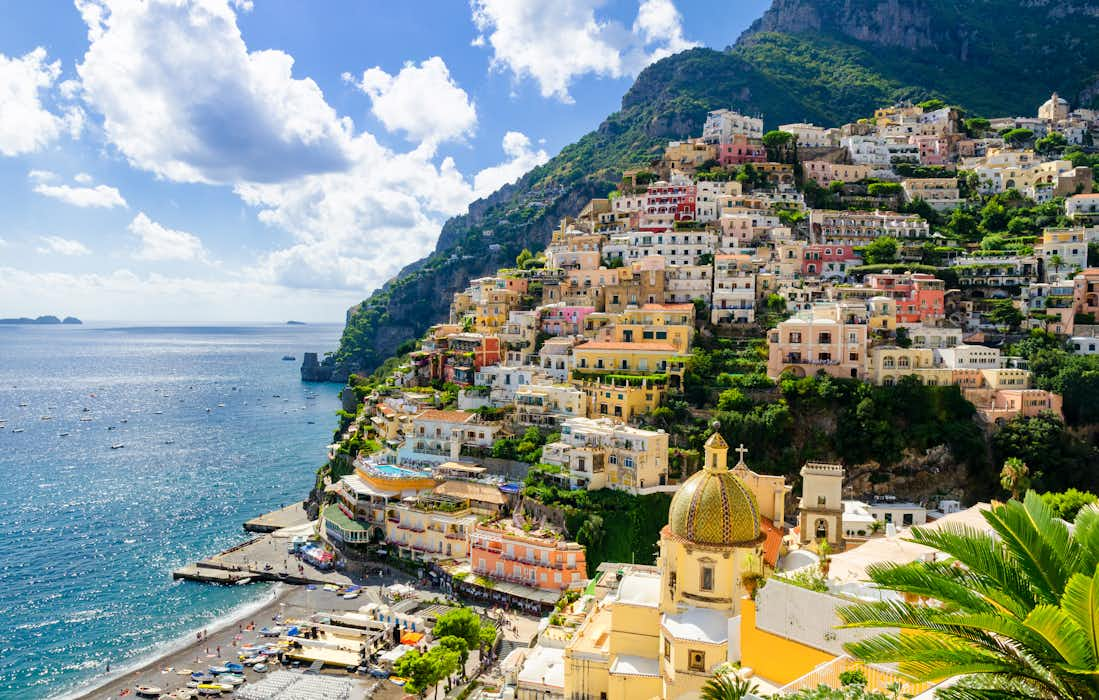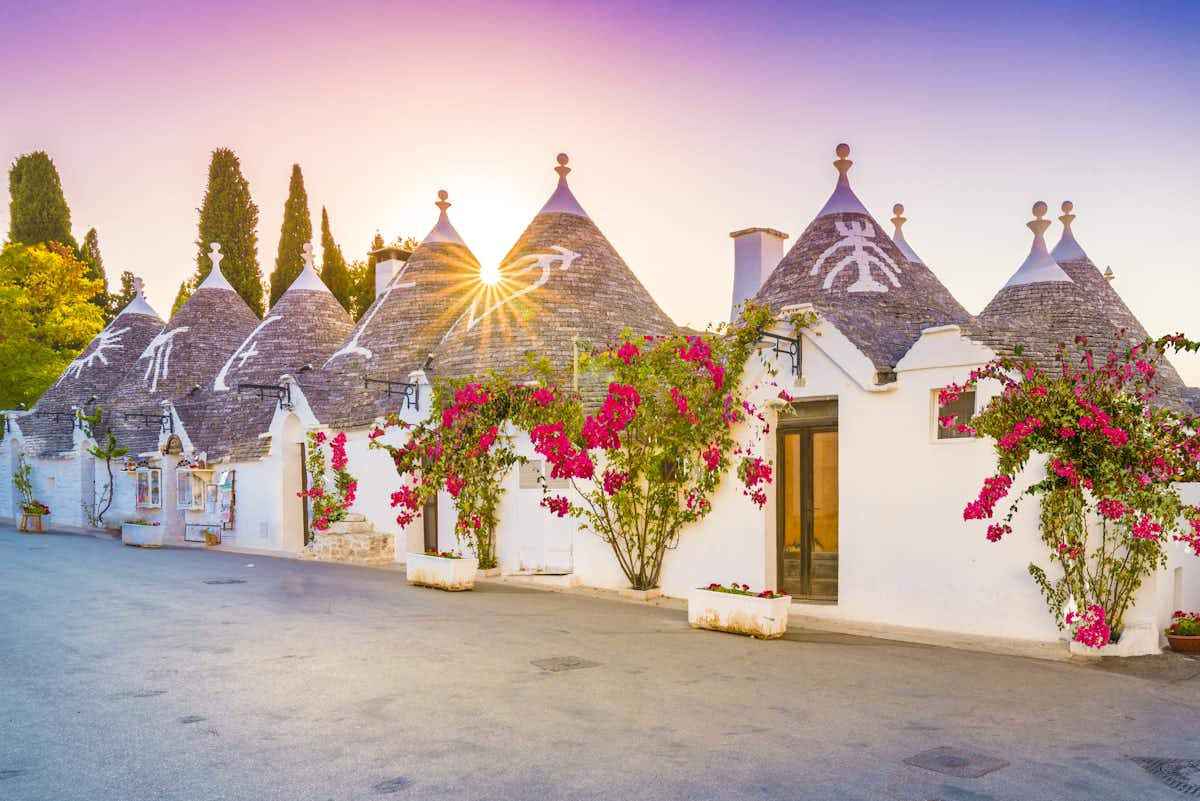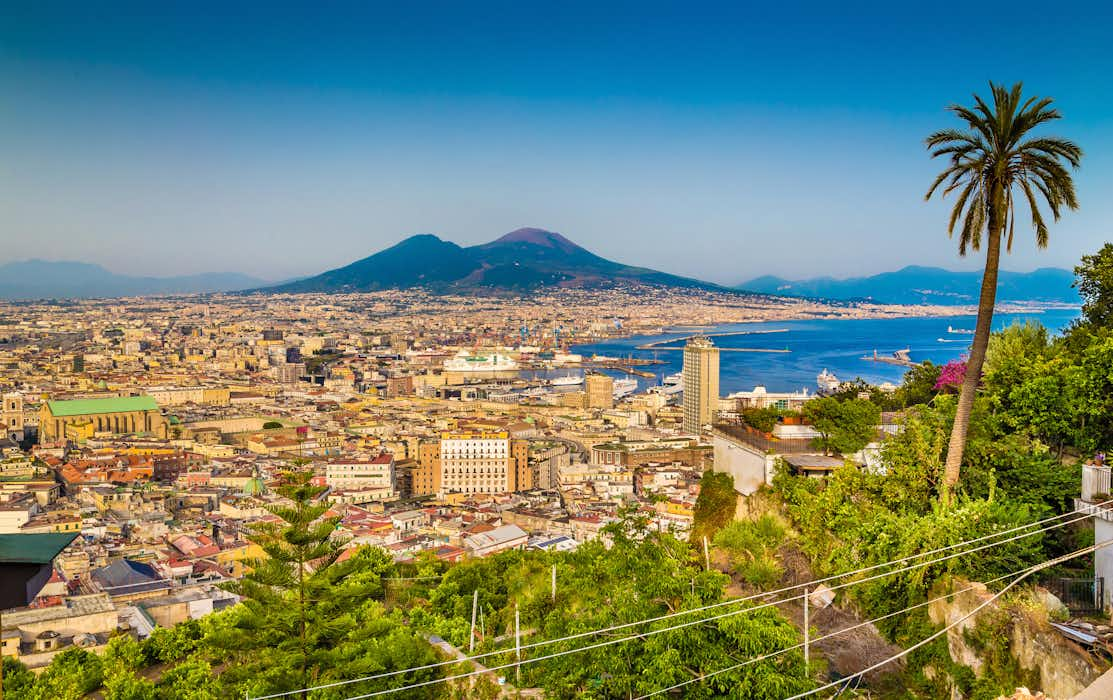Southern Italy: UNESCO Sites Tour
You’ve probably heard about UNESCO World Heritage Sites. They’re places of such historical or cultural significance that they’re protected for their outstanding value to humanity. Italy has a whopping 55 of them, and many of them are in Southern Italy.There’s beautiful city centers and ancient archaeological sites. Cataclysmic volcanos and medieval churches. Monasteries and palaces. Unfortunately most aren’t easily accessible by public transport. So what do you do? Skip them? Fortunately, there’s an easy option! Take a private car with Daytrip! Not only will we bring you door-to-door, but we’ve already made an itinerary of UNESCO World Heritage Site for you to visit on the way!Along the way, you’ll stop in some wonderful locations, each with their own distinctive charm. There’ll be beaches and volcanoes, gritty cities and luxurious resort towns, and plenty in between.Your UNESCO South Italy Itinerary:
Day 1:Naples to Positano (stops in: Mount Vesuvius, Pompeii)
Day 2:Positano to Matera (stops in: Paestum, Certosa di Padula)
Day 3:Matera to Benevento (stops in: Alberobello, Castel del Monte)
Day 4:Benevento to Naples (stops in: Royal Palace of Caserta, Anfiteatro Campano)
Day 1: Naples to Positano
You could say that every trip to the Amalfi Coast starts in Naples, though you can also go directly from Rome! If you haven’t had your fill of pizza and palaces, you can get more at the end of this tour!For now, it’s on to Positano, the jewel of the Amalfi Coast!
Mount Vesuvius

That’s right, UNESCO also protects important natural areas as well! You probably know Mount Vesuvius for destroying the ancient Roman city of Pompeii. But the volcano is also an important source of life, and the fertile soil it produced has been cultivated for thousands of years. On a 2 hour visit, you can walk around the crater formed by the cataclysmic eruption. Inside is a steaming moonscape. But look the other direction and you’ll have an amazing view of the Bay of Naples and green ring surrounding the base of the still-active volcano.
Pompeii

After seeing the culprit, take 2 hours to visit its most famous victim. The eruption of Mount Vesuvius in 79 AD buried the Roman city of Pompeii under volcanic ash and debris, freezing it in time. Now you can walk the ancient streets and peer into homes, shops, and temples, some of which still have the fossilized remains! The ruins are vast and with so much to see, we recommend you plan your visit in advance or hire a guide.
Arrival in Positano

We want you to imagine the Amalfi Coast. The image that came to mind - the one with pastel-coloured buildings staggered unevenly in the cliffside, with winding cobblestone streets packed with intrigue and beautiful sights at every turn - well, that’s Positano.The entire Amalfi Coast is a UNESCO World Heritage Site for its natural beauty and traditional way of life. Ancient walking trails still wind through the mountains, and the coast is dotted with villages whose pastel houses cling to steep cliffs. And Positano sits in the pantheon of the prettiest among them. The hills are especially steep, the houses particularly charming. It’s become a favorite retreat for the rich and the famous, though was a rustic fishing village until John Steinbeck brought it to the world’s attention.Now it’s a place of luxury, with fashionable boutiques, ample fine dining establishments and extravagant yachts in the harbour. But it’s not all glitz and glam. Vendor’s still sell humble cups of fried fish in the winding alleys, and every meal is concluded with a glass of traditional limoncello. So relax on the beach, stroll through the steep, winding roads of the old town, and dine like royalty as you lap up the best of South Italian cuisine.Duration: 6 hours and 11 minutesBook a private car from Naples to Positano
Day 2: Positano to Matera
From the colorful fishing village, head inland a bit to the captivating hilltop city of Matera.
Paestum
https://www.instagram.com/p/CE8-RlEh3q2/The ruins of Paestum are a UNESCO World Heritage Site, boasting arguably the greatest collection of Ancient Greek architecture in the world. The archaeological site is home to three temples built between 550 and 450 BC. Somehow, they’ve survived the past 2500 years in impeccable condition - you can even walk through two of them! There’s an on-site museum filled with archaeological displays, interesting artefacts and funerary frescoes, most famously, the iconic Tomb of the Diver!
Certosa di Padula

Stop for 2 hours to explore Italy’s largest monastery. Dating back to the 14th century, the building complex today is largely done up in extravagant Baroque style. The 300+ rooms are dripping with gilt, artwork, and opulent decor. Even the library is a floor-to-ceiling work of art! But the centerpiece of this UNESCO World Heritage Site is undoubtedly the cloister. And we mean that quite literally, the entire monastery wraps around the
Arrival in Matera

A far cry from the pastels of the Amalfi Coast, there’s something almost primal feeling about Matera. And that makes sense - at almost 9000 years old, it’s one of the three oldest settlements on the planet.Spread across the top of a plateau, Matera was founded by the Romans in the 3rd century BC. Over the centuries, it grew into a maze of stone houses, dotted with medieval monuments, such as the 13th-century cathedral, and 16th-century castle.But the most amazing part of the city lies beneath your feet. The “Sassi di Matera”, is a prehistoric network of cave homes. Up until the 1950s, these were a place of squalor that the prime minister called a “national disgrace”. Thankfully, the rag-clad cave children were taken care of, and the troglodyte homes restored and preserved. Today, they’re a UNESCO World Heritage Site showcasing thousands of years of human habitation. Not to mention some of the world’s most unique restaurants, hotels, and museums.Duration: 9 hours and 32 minutesBook a private car from Positano to Matera
Day 3: Matera to Benevento
Once you’re ready to cave in and head out, hit the road from Matera to Benevento.
Alberobello

Spend 90 minutes walking through a village of unique conical houses found only in Puglia. The design of these 16th century homes is so distinctive, the town was awarded UNESCO World Heritage! Most are still homes today and you can walk round entire neighbourhoods filled exclusively with houses in this style! To learn more about the traditional homes, some have been converted into museums offering an educational history on the town's beginnings.
Castel del Monte

Spend 75 minutes exploring the halls of one of the most unique examples of medieval architecture you’ll ever see. Blending Classic, Islamic, and Gothic elements, historians still haven’t figured out why it was built. Constructed from octagons, a formation known to symbolise renewal and resurrection, the union between God and Man, it’s a UNESCO World Heritage Site for its singular design.
Arrival in Benevento

Benevento is so old that when the Romans finally conquered it (it took two wars), they argued over its origins. The city was an important trading station for ancient Rome, so they outfitted it with all the fixings of a proper city. Amazingly, some of these still survive to this day!The most famous are the Theatre and the Arch of Trajan. The theatre, built in the 2nd century by Emperor Hadrian, has survived the test of time, and is still sometimes used for concerts and theatre productions! Just a few years later, Emperor Trajan constructed his triumphal arch commemorating the launch of the Via Traiana trade route.Surprisingly, the Roman monuments aren’t even the star of the show in Benevento. That title goes to the 8th century Santa Sofia Church. This UNESCO World Heritage Site is a relic of the Longobards (Lombards), a Germanic tribe who ruled much of Italy from the 6th to 8th centuries. Amazingly, the church still has remnants of its original frescoes!Duration: 7 hours and 19 minutes Book a private car from Matera to Benevento
Day 4: Benevento to Naples
After you’ve finished taking in the ancient history of Benevento, go back to the beautiful bustle of Naples.
Royal Palace of Caserta

You know how the Palace of Versailles is a symbol of unbridled royal excess? Well the Royal Palace of Caserta is several times larger. Built by Charles VII of Naples in 1752, it’s one of the largest palaces in the world, with 5 floors and over 1200 rooms! And every inch of the interior is dripping in gold gilt and marble and covered with grandiose works of art. With so much to see at this UNESCO World Heritage Site, you have the option to explore on your own or book a guided tour with an on-site expert on your 2-hour visit.
Anfiteatro Campano

Rome’s Colosseum holds the title of biggest amphitheatre in Italy, but the lesser-known Anfiteatro Campano is the second largest, and older. In fact, this UNESCO World Heritage Site may have been the first amphitheatre built by the Romans, and the Colosseum was likely modeled after it! Oh, and did we mention that it was also home to the first (and most famous) school for gladiators? Stop for 90 minutes to soak up the history while you explore everything from the underground chambers to the tombs, and the secret networks of trap doors.
Arrival in Naples

Probably the first thing on any traveler’s list in Naples is pizza. There’s countless pizzerias in the city, and just as many debates as to which is best. You could literally center an entire holiday on sampling the city’s pies. Then there’s other culinary delights like homemade pasta, fresh seafood, and baked treats such as sfogliatelle pastry. And if you’re in need of a digestif after your food, in Naples, coffee is art, so you can’t go wrong.Aside from food, Naples boasts a boatload of beautiful buildings. In fact, the whole of the city center is a UNESCO World Heritage Site. There are hundreds of churches, 3 castles, 2 royal palaces, and countless lavish manors. Just head to the Piazza del Plebiscito where you’ll find the Royal Palace, Palazzo Salerno, and the Church of San Francesco di Paolo.Naples is packed with museums, most famously the Museo Archeologico Nazionale which showcases a massive collection of ancient Roman artifacts, including those excavated from Pompeii and Herculaneum!Duration: 5 hours and 29 minutesBook a private car from Benevento to Naples
Read to Discover Southern Italy’s UNESCO Sites?
Here’s each leg of the trip!
Book a private car from Naples to Positano
Book a private car from Positano to Matera
Book a private car from Matera to Benevento
Book a private car from Benevento to Naples

